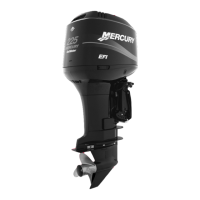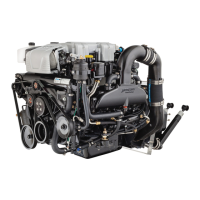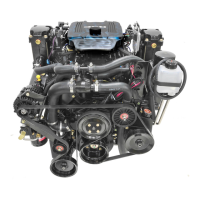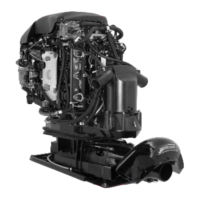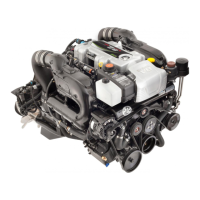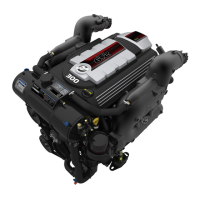INSTALLATION
52 eng
IMPORTANT: Please follow the instructions below:
• Hydrogen gas is generated when charging a battery. Keep
the battery in a well‑ventilated area during charging.
Remove the battery from the boat; this will protect your hull
and interior from damage. Electric sparks, cigarette
smoking, and other sources of fire must be avoided in the
charging area to prevent explosion of the battery.
• The battery fluid (electrolyte) contains sulfuric acid. If
electrolyte is spilled on the skin or clothes, wash with plenty
of water and consult a medical doctor. Always use safety
glasses and rubber gloves when handling the battery.
Propeller Selection
For best all around performance from your outboard/boat
combination, select a propeller that allows the engine to operate
in the upper half of the recommended full throttle RPM range
with the boat normally loaded (refer to General Information ‑
Specifications). This RPM range allows for better acceleration
while maintaining maximum boat speed.
The propeller supplied with your outboard provides the best
overall performance under average operating conditions.
Alternative propellers are available for specific boating
requirements. See your outboard dealer.
AVAILABLE PROPELLERS
Light‑duty boat
— Heavy‑duty boat
Mark 14 (E) 13 (D) 11 (C) 10 (B) 9 (A) 8 (F)
Dimensions
(blade x
diameter x pitch)
mm
3 x 252
x 360
3 x 252
x 332
3 x 250
x 288
3 x 250
x 260
3 x 249
x 236
3 x 260
x 210
If changing conditions cause the RPM to drop below the
recommended range, such as warmer, more humid weather,
operation at higher elevations, increased boat load, or a dirty
boat bottom/gearcase, a propeller change or cleaning may be
required to maintain performance and ensure the outboard's
durability.

